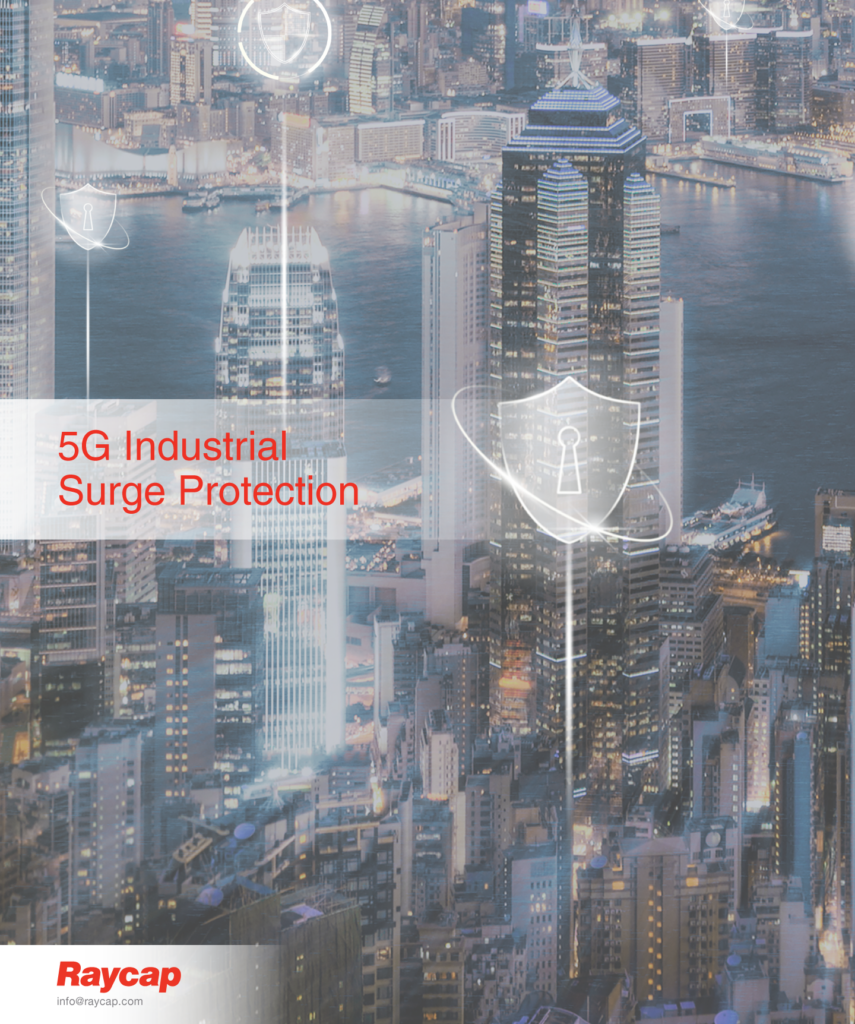Securing 5G: The Crucial Role of Surge Protection in Safeguarding Advanced Networks
The fifth generation of mobile networks, known as 5G, has revolutionized the telecommunications industry. By offering unprecedented data speeds, low latency, and enhanced connectivity, 5G technology opens up a world of possibilities for various sectors. However, the success of 5G installations relies on robust infrastructure that can withstand and protect against potential hazards. One critical aspect sometimes overlooked is integrating surge protection into 5G installations, whether on small-cell, mid-cell, or macro-cell sites.
Lightning pose a significant threat to 5G infrastructure, potentially leading to downtime, equipment damage, and service disruptions. This article explores the advantages of integrating surge protection into 5G installations and how it ensures these advanced networks’ seamless and reliable operation.
Lightning protection, also called industrial surge protection, diverts transient voltage spikes away from sensitive electronic equipment through a specifically designed technology. 5G installations, which encompass a complex web of small cells, base stations, antennas, and communication equipment, are vulnerable to power surges caused by lightning strikes due to their extensive environmental exposure. Integrating surge protection into these installations is vital to safeguard against potential damages and ensure continuous service availability.
Enhancing 5G Reliability Through Surge Protection Integration
The integration of surge protection devices in 5G installations provides a crucial layer of defense for sensitive electronic equipment. By diverting excessive energy away from sensitive electronics, surge protection devices shield equipment from damage and prolong their operational lifespan. This protection translates into cost savings, as there is a reduced need for frequent equipment replacements. Designers have crafted 5G networks to deliver uninterrupted and reliable connectivity.
Disruptions and power outages severely impact the user experience and create revenue losses for service providers. Integrating surge protection ensures the network remains operational despite adverse weather conditions, minimizing downtime and maintaining high-quality service delivery. Data integrity is crucial for 5G applications, especially in critical industries such as healthcare, finance, and autonomous vehicles. Power outages can lead to data loss and corruption, compromising the accuracy and reliability of the information transmitted.
Surge protection mitigates the risk of data loss, ensuring the integrity of information exchange. Experts anticipate that 5G networks will offer connectivity in diverse environments, such as urban centers, remote areas, and regions affected by disasters. Integrating overvoltage protection into 5G installations enhances network resilience, allowing the infrastructure to withstand environmental challenges such as lightning strikes and electrical disturbances. The installation, maintenance, and repair of 5G infrastructure involve personnel working with high-powered equipment.
Enhancing Safety and Compliance: Integrating Surge Protection in 5G Installations
Lightning strikes can pose safety risks to technicians and users interacting with the network. Integrating surge protection into 5G installations ensures compliance with industry standards and regulations. Telecommunication standards organizations, such as the International Electrotechnical Commission (IEC) and the Institute of Electrical and Electronics Engineers (IEEE), provide guidelines for how to integrate surge protection in telecommunications infrastructure. These standards ensure the network’s robust protection and compliance with regulatory requirements.
Integrating surge protection into 5G installations requires careful planning and implementation. Conducting a thorough site assessment to identify potential risk factors, such as lightning-prone areas or regions with unstable power grids, is crucial. This assessment helps determine the appropriate surge protection measures required for each site. Implementing a multi-level surge protection approach, including primary protection at the main power entrance and secondary protection at distribution panels and individual equipment levels, ensures comprehensive coverage.
Coordinating surge protective devices across the network prevents redundancy and provides optimal protection against power surges. In addition to power surges, data lines can also be susceptible to surges. Implementing data line surge protection safeguards communication lines, such as Ethernet and fiber optic cables, from surges. Smart technologies, such as IoT (Internet of Things) sensors and AI (Artificial Intelligence), enhance the efficiency and effectiveness of the 5G network. These technologies enable predictive maintenance, real-time monitoring, and remote diagnostics, providing valuable insights into the network’s performance. Data or signal line surge protection is necessary to keep these critical IT systems functioning.
Empowering 5G Networks: Surge Protection’s Crucial Role
In North America, the rollout of 5G is well underway, with successful implementation in many large urban areas with wireless coverage. In rural areas, 5G will use broadband services, and installations of these network connections are just now rising. Integrating surge protection into broadband cabinets will offer tangible benefits and positively impact network resilience and uptime. As 5G technology continues to evolve, so will surge protection systems. Technology experts in surge protection will continue to enhance the reliability and efficiency of their new solutions to serve 5G and next-generation network installations.
Integrating surge protection into 5G installations is critical to ensuring reliable and continuous network operation. By safeguarding sensitive electronic equipment, minimizing downtime, preserving data integrity, and enhancing network resilience, surge protection devices play a vital role in empowering the success of 5G infrastructure. As the telecommunications industry embraces the potential of 5G technology, investing in industrial surge protection will remain indispensable for harnessing the full potential of this network transformation.

